Turn a good manager into a great manager by embracing human leadership.
Leader and manager effectiveness is the #1 priority for HR leaders in 2023, and research from Gartner shows that employees respond best to “human” leaders—or those who lead with authenticity, empathy, and adaptivity.[1]
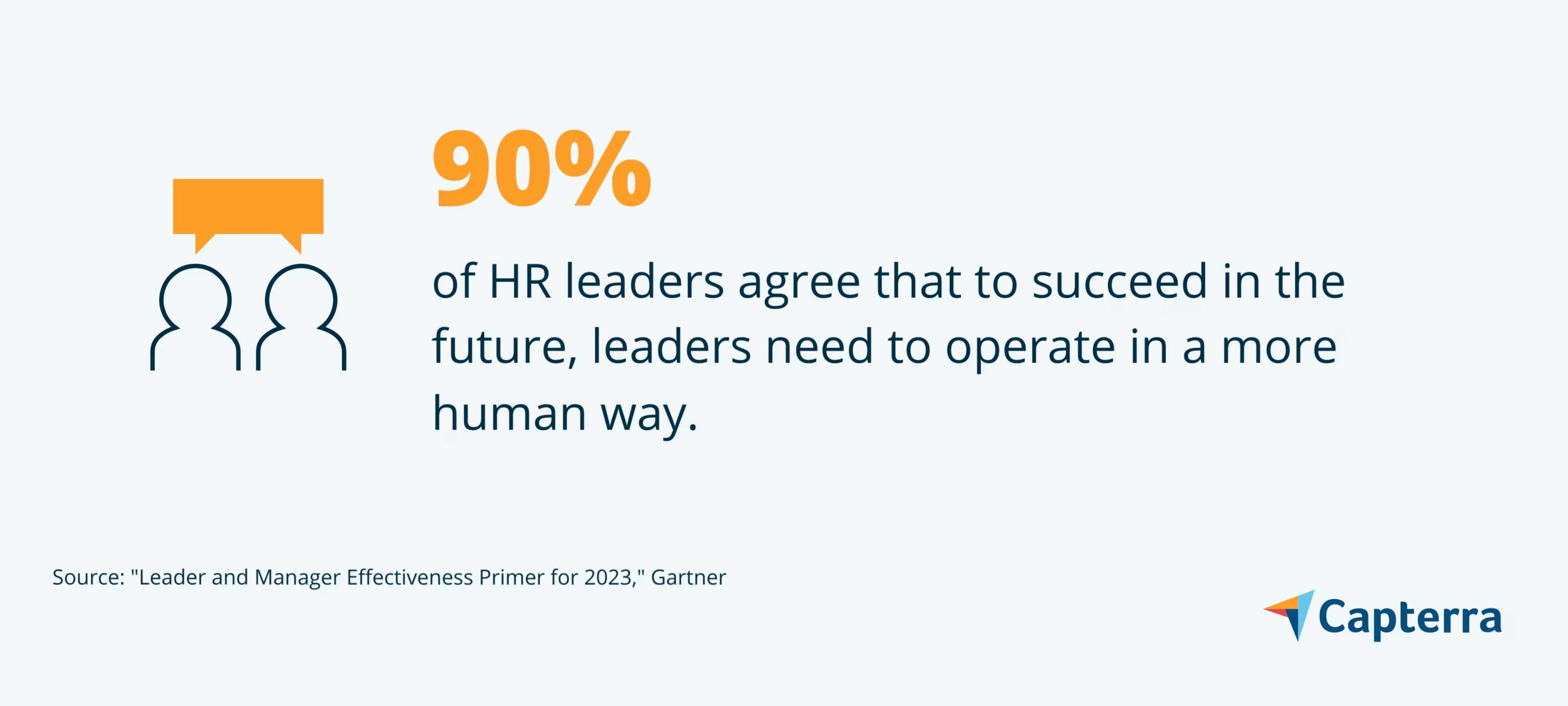
Knowing the direct impact people managers have on the employee experience, introducing the concept of human leadership (and providing the resources and training necessary to direct managers toward it) can lead to less voluntary turnover and higher employee job satisfaction at your organization.
Ahead, we’ve outlined everything that HR leaders and executive teams need to know about human leadership, from what it is and why it matters to four steps you can take to implement this management strategy at your workplace.
Why does manager effectiveness matter?
The consequences of manager ineffectiveness—which we’ve summarized below—are worth avoiding.
It can drive voluntary turnover: “People don’t quit jobs—they quit bosses.” It’s a trope for a reason: 57% of unhappy employees leave their jobs because of their bosses.[3]
It can lower productivity: Whether due to micromanagement or miscommunications, a bad manager can drain their team’s motivation and cause productivity to take a nosedive. In fact, research shows that employees with bad bosses waste between 10% and 52% of their time at work.[4] Further, 38% of employees with bad bosses intentionally decreased the quality of their work, and 78% said that their commitment to the organization declined.
It can put a damper on recruitment efforts: No one wants to work for a bad boss. Mentions of ineffectual managers on employer review sites can tarnish your organization’s reputation in the eyes of potential employees and make it harder to attract great talent in the future.
The key to manager effectiveness: human leadership
Today’s work environment calls for a new kind of leader. While managers are still expected to support their team members, deliver business results, and oversee workflows, the way in which they approach these responsibilities has shifted due to boundary-blurring factors such as hybrid work arrangements and social and political turbulence.
This new kind of leadership—which Gartner has dubbed “human leadership”—centers around the idea that managers must model what it means to bring ones’ “full self” to work.[7] Doing so will empower their team members to follow suit, eventually leading to a work environment that acknowledges each individual as a person first and a professional second.
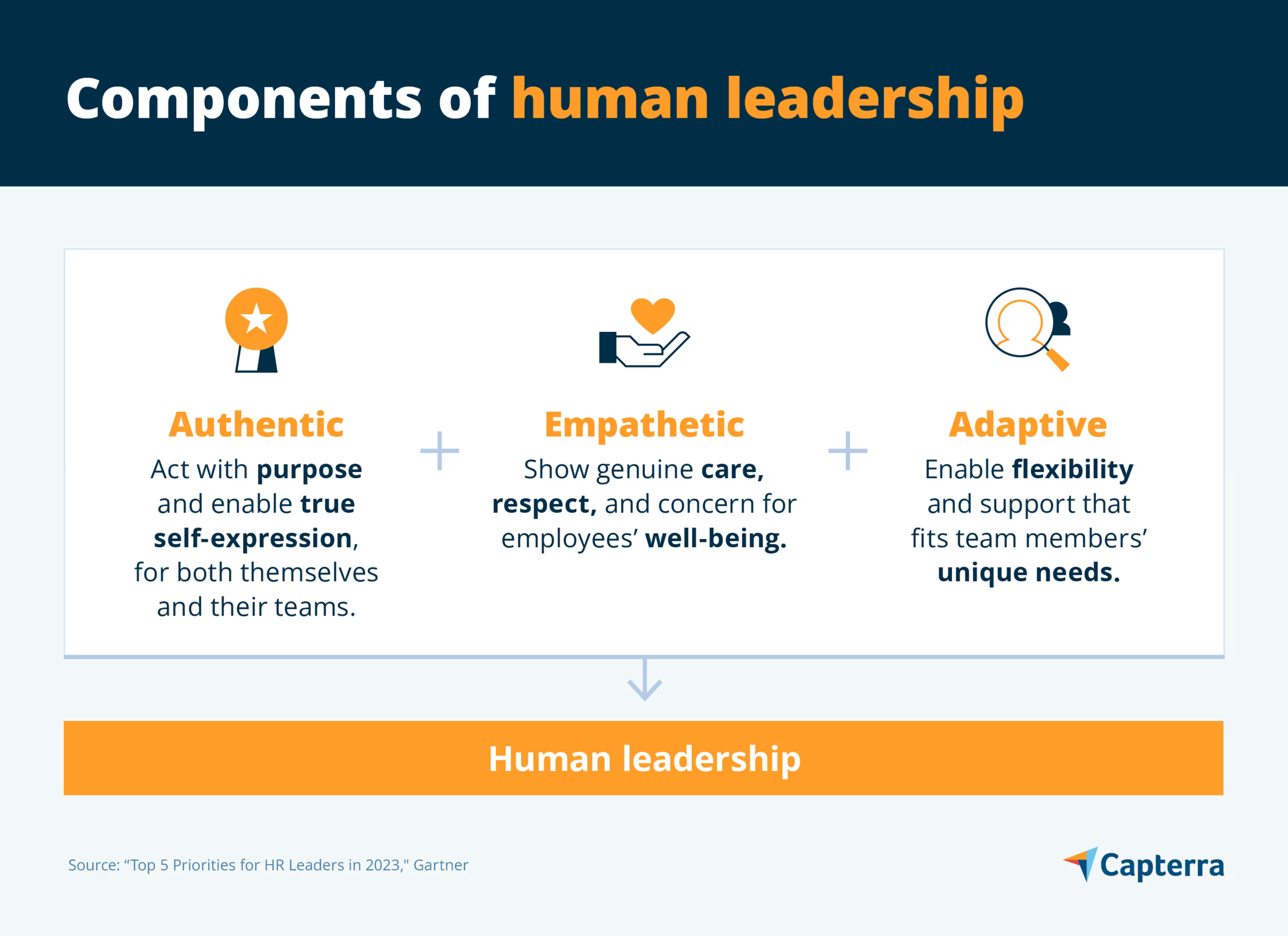
Currently, less than a third (29%) of employees say that their leaders are effective human leaders.[1] This is a missed opportunity considering that employees who evaluate their skip-level leader as a “human” leader are more likely than average to report a high intent to stay, high engagement, and high well-being.
Ahead, we’ve outlined four steps HR leaders can take to foster human leadership at their organization and develop more effective managers along the way.
4 steps to take toward human leadership
1. Identify successful leaders within the organization
Despite the potential impact of the human leadership approach, a lack of buy-in from existing leaders is a primary barrier to implementation for most organizations. To overcome this, identify current organizational leaders who embody the core components of human leadership (authenticity, empathy, and adaptivity) and encourage them to drive momentum toward your human leadership vision.
360 feedback surveys can be a helpful tool when it comes to identifying great managers within your workforce. These surveys act as a channel for feedback from employees, and you can tailor the survey questions to measure how leaders are performing against various manager effectiveness metrics.
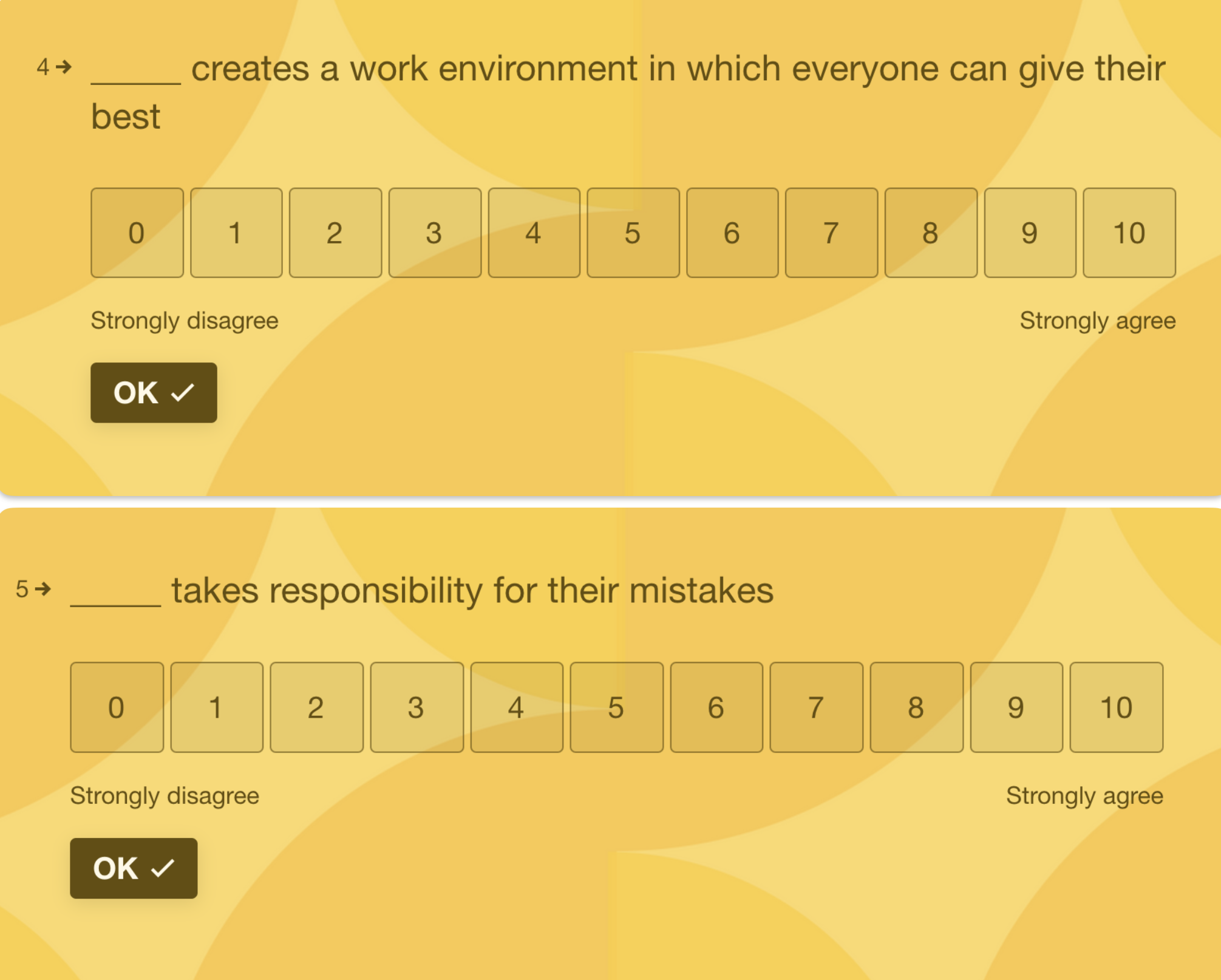
A set of questions used to measure how supportive and open a manager is with their team[5]
We recommend using a survey to help gather information about managers’ performance in the eyes of their reports. Then, analyze the results to determine which leaders received the highest marks and assemble a task force of those high-performing, trusted leaders who can campaign for human leadership.
Once you’ve got a task force together, aim to roll out initiatives that help further your progress toward human leadership on a quarterly basis. For example, you can have successful leaders mentor other managers within the organization, or set the expectation that leaders will complete a management course (such as the one below) every few months.

A training program on emotionally intelligent leadership from Bailey & French[6]
2. Acknowledge and address barriers to human leadership
Gartner surveyed 1,000 business leaders and found that the majority (71%) of leaders who are not effective human leaders can be classified into three types: uncertain strivers, fearful believers, and doubtful achievers.[7]

Each type of leader faces a distinctive emotional barrier to executing human leadership:
Uncertain strivers feel uncertain about how to effectively deliver human leadership.
Fearful believers fear the risk and vulnerability associated with human leadership.
Doubtful achievers doubt that human leadership is important to achieving their business objectives.
Addressing these barriers is a key part of the leadership development process, but each one requires a different solution. For example, uncertain strivers need to build confidence in their ability to apply human leadership principles to people management, while fearful believers need courage to overcome their fears of vulnerability.
Further, doubtful achievers need to be convinced to commit to human leadership—which is easier said than done considering that only 37% of business leaders say that they trust data and analysis provided by HR, and HR's typical approach for overcoming resistance to organizational change is to present a data-driven case for human leadership.
/ You might like
Instead of attempting to label each leader in your organization as one of the four types mentioned above, focus on strategies that address the barriers they represent. For example:
Task forces: Use this strategy to help convey to doubtful achievers the value of human leadership.
Training resources: Provide resources on human leadership principles for uncertain strivers.
Safe space: Create a welcoming space for fearful believers to surface their fears and learn how to navigate them. Check out the case study below for an example of what this might look like in practice.
/ CASE STUDY
Akebia Therapeutics’ Fear-Awareness Workshop for Leaders
In 2021, Akebia Therapeutics, a Massachusetts-based biopharmaceuticals company, introduced a fear-awareness workshop that became a foundational component of their leadership development program. Recognizing that every leader is held back by fear to some extent, Akebia wanted to provide a channel for leaders to share their fears and learn how to manage their responses to those fears together.
During the workshop, leaders participate in lessons and breakout activities that train them to choose alternative, authentic responses to fear over emotional reactions that can cause a psychologically unsafe and unproductive work environment.
One exercise, dubbed the “Fear Onion,” has leaders imagine their fears peeling back like layers of an onion to find deeper fears that lay beneath the surface. Through this, leaders identify and unpack core fears that deeply affect them and reflect on how to course-correct so that they can lead their teams more effectively.
3. Teach managers to practice value-guided decision making
With the right support in place to guide your organization toward human leadership, management effectiveness is bound to improve—but HR needs to strike the balance between showing managers the way and empowering them to make their own decisions.
HR typically tries to help leaders navigate highly complex situations by providing prescriptive guidance, but there’s evidence that this approach doesn’t actually work: Less than a third (29%) of HR leaders say managers at their organizations actually give employees support that fits their unique needs.[7]
In today’s work environment, leaders face too many unique scenarios, and overly-specific guidance often does not translate in ambiguous situations. Instead, HR should encourage managers to practice value-guided decision making6 questions to guide managers through value-guided decision making:
What decision are you considering? What are your options?
How do your options align with your values?
How do your options conflict with your values?
Which values do you have to absolutely honor?
Which values are you willing to compromise?
Based on your previous answers, what decision is the best fit for your values? How come?
4. Measure managers’ performance in relation to human leadership competencies
Lastly, in order to determine how your organization’s leaders are truly performing, you need to measure manager performance in relation to human leadership competencies. Once again, you can use 360 degree feedback software or performance management tools to accomplish this, but the key is to tailor the questions so that employees are forced to reflect on their manager’s human leadership skills—not just whether their team performed against predetermined KPIs.
As a matter of fact, you can reuse the survey mentioned in step one of this guide and compare the results over time as you introduce new initiatives to develop human leaders. Just make sure to make small changes to your survey on a quarterly or bi-annual basis so that employees don’t get in the habit of treating it like another task on their to-do list.
Additionally, tracking employee engagement metrics such as job satisfaction or turnover rates can shed light on how the pivot toward human leadership has impacted your workforce. Some platforms even allow you to build custom dashboards, a particularly useful feature that can provide a quick overview of engagement across the organization.
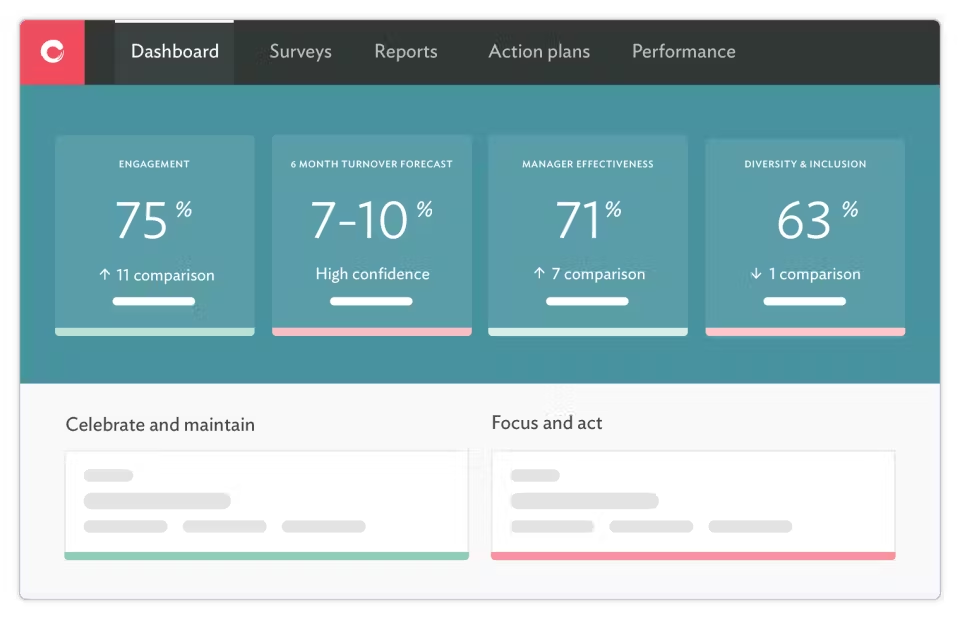
A dashboard summarizes engagement, turnover, and manager effectiveness scores in Culture Amp (Source)
Discover more content related to improving your company culture
There’s no denying that in 2023, work culture transforms at a rapid rate. Today, organizations are expected to recognize their employees’ unique perspectives and treat them with empathy and respect.
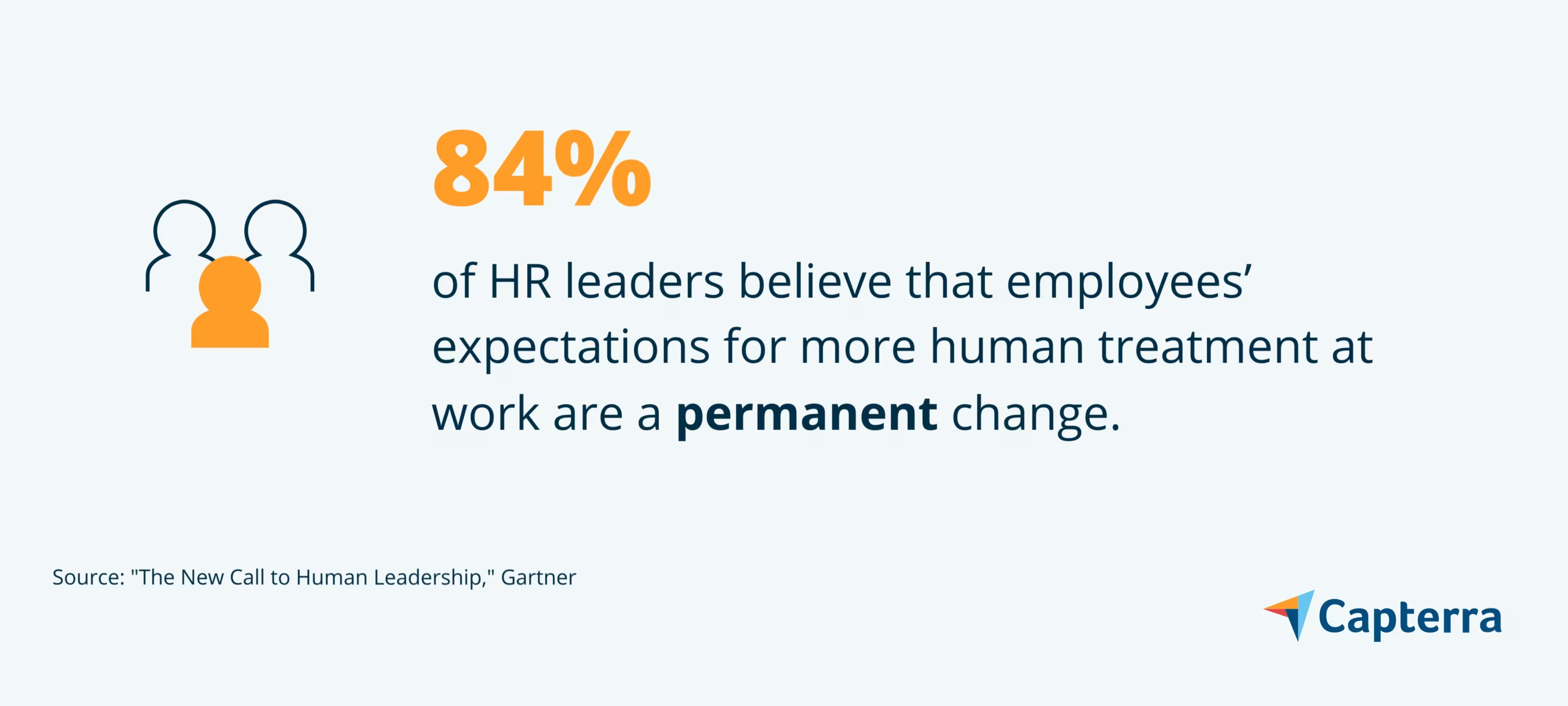
Human leadership is the new standard for managerial effectiveness, and encouraging your people managers to achieve it can help improve employee engagement and intent-to-stay.
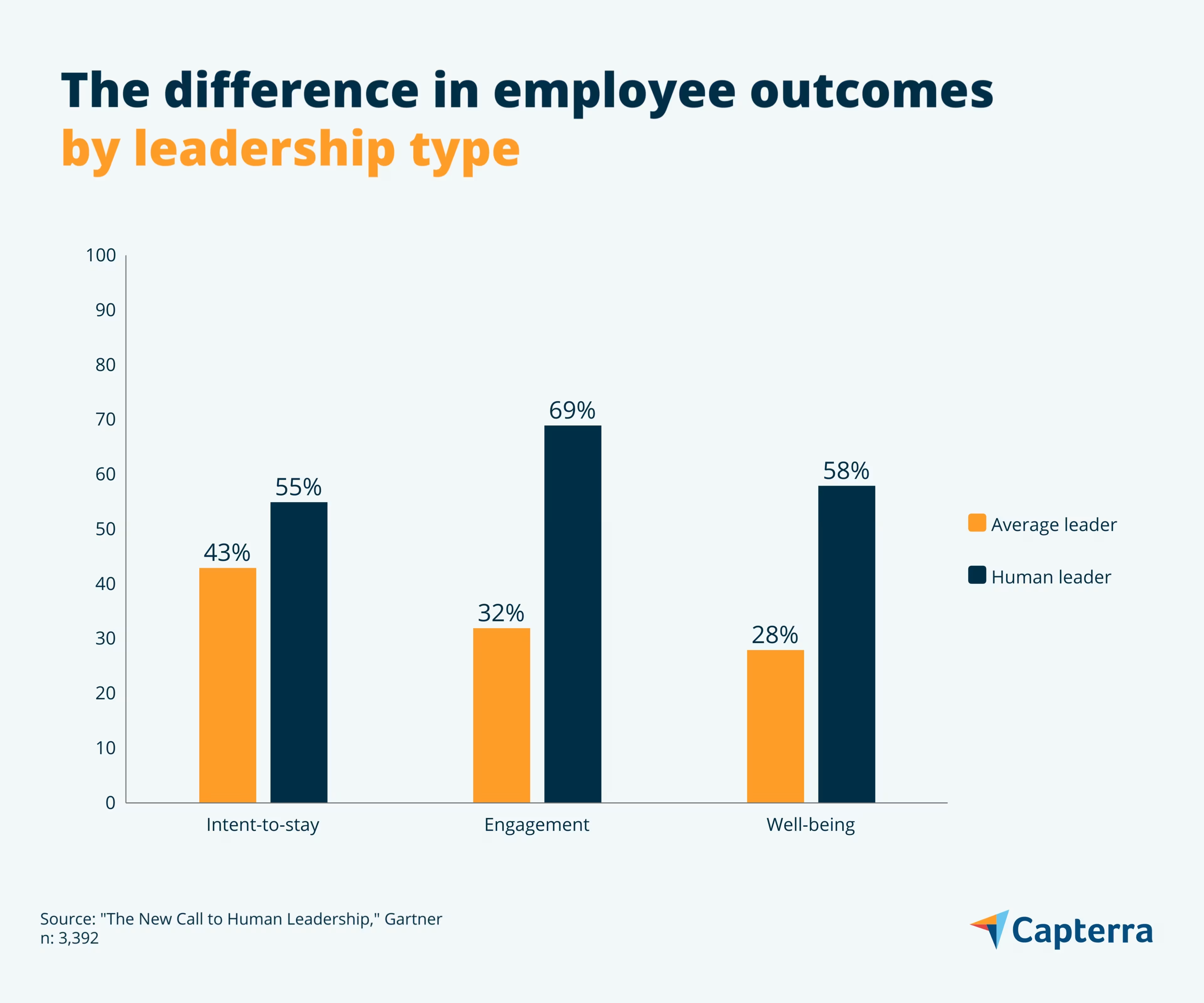
Start improving manager effectiveness through human leadership with the following steps:
Identify successful leaders within the organization
Acknowledge and address barriers to human leadership
Teach managers to practice value-guided decision making
Measure managers’ performance in relation to human leadership competencies
And if you’re looking for more content related to improving the employee experience, check out these links:

